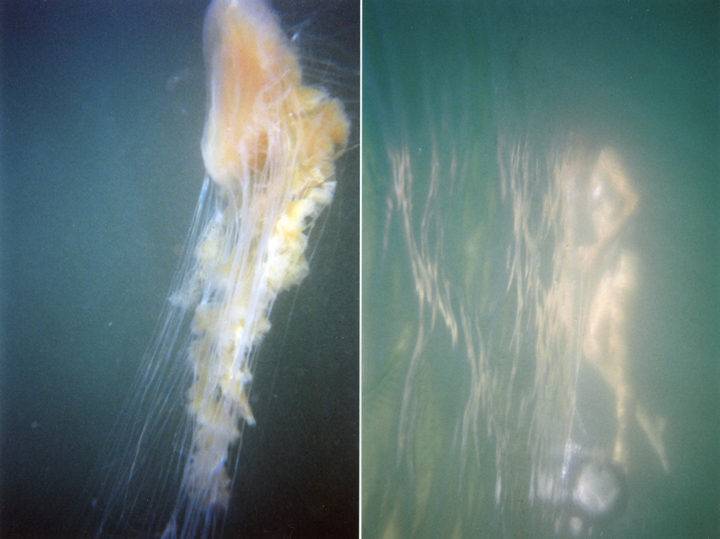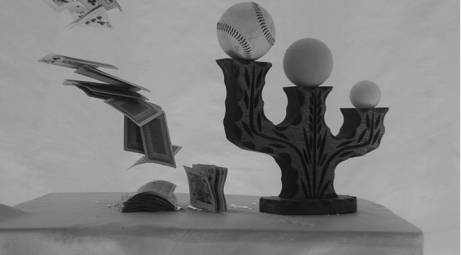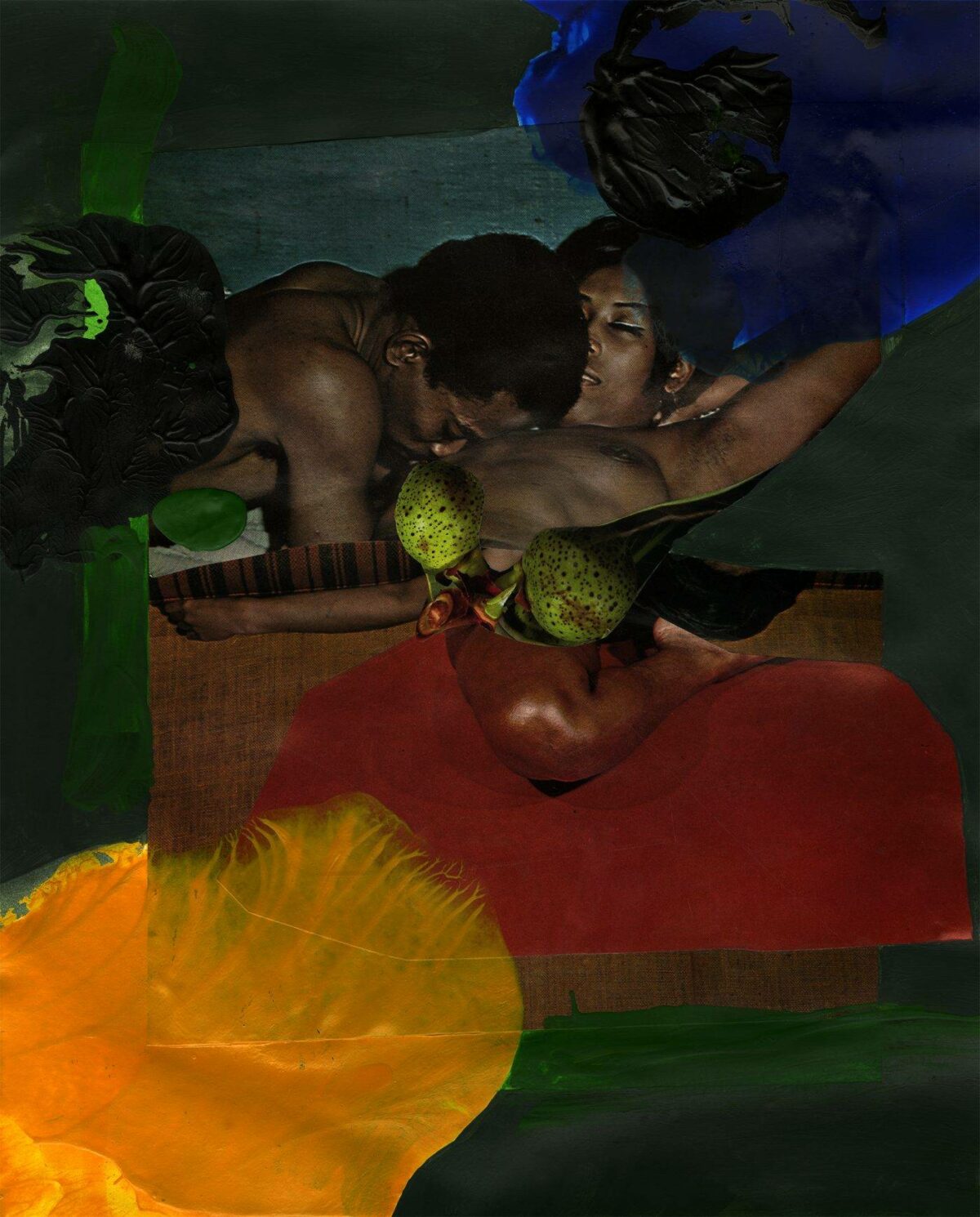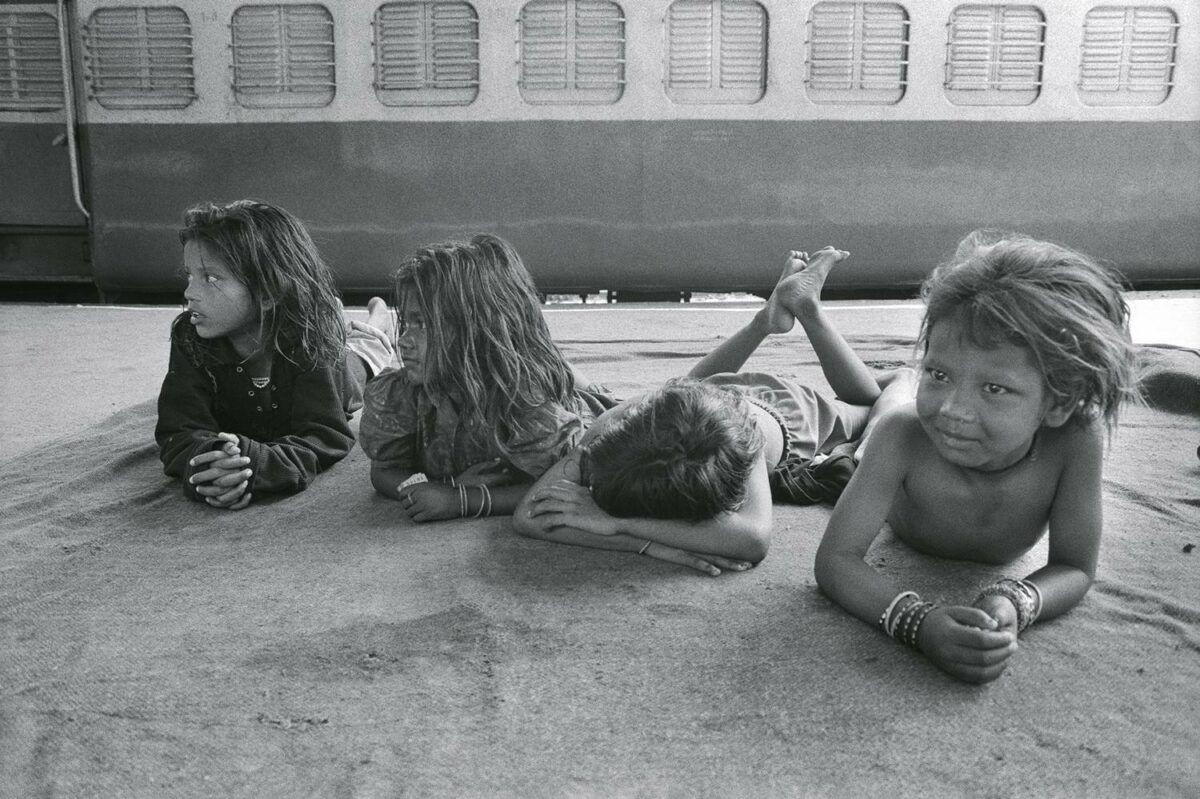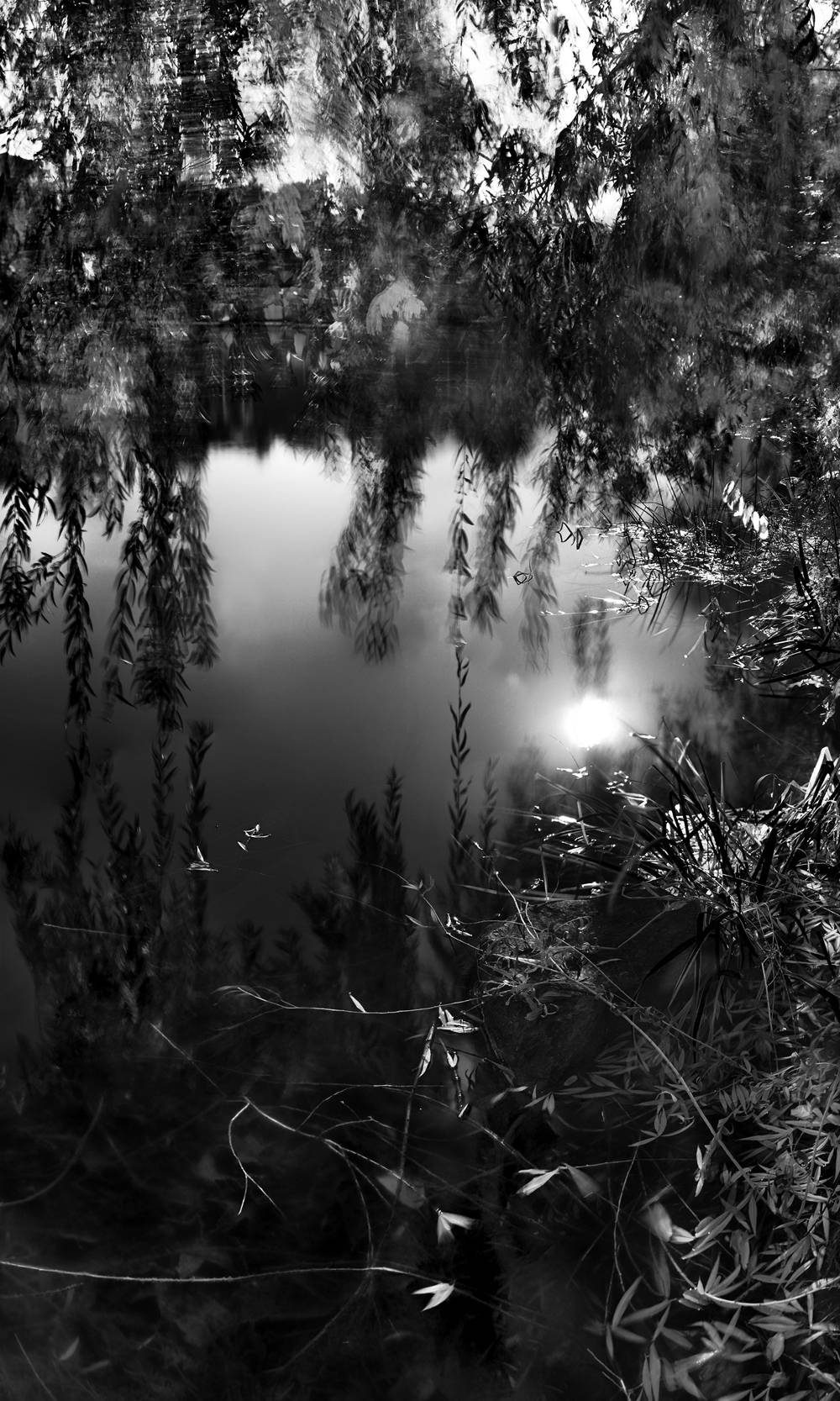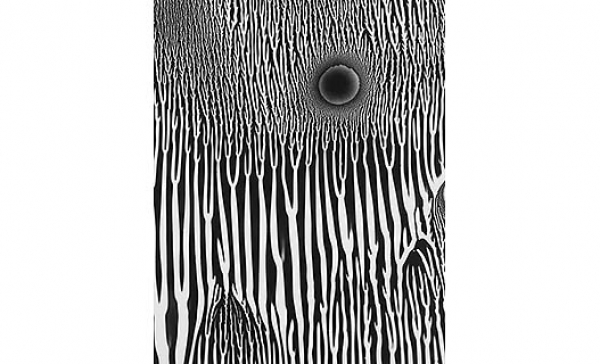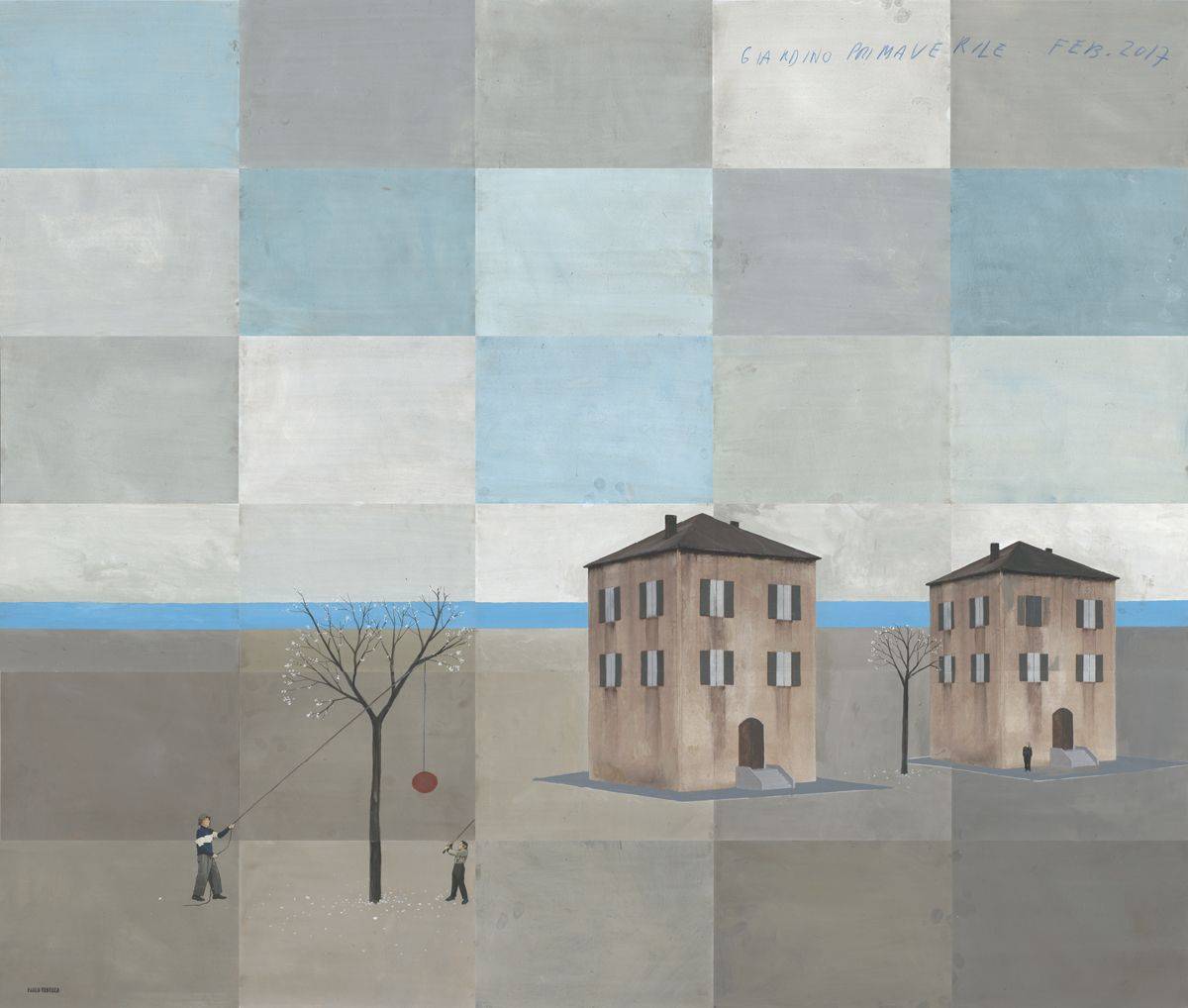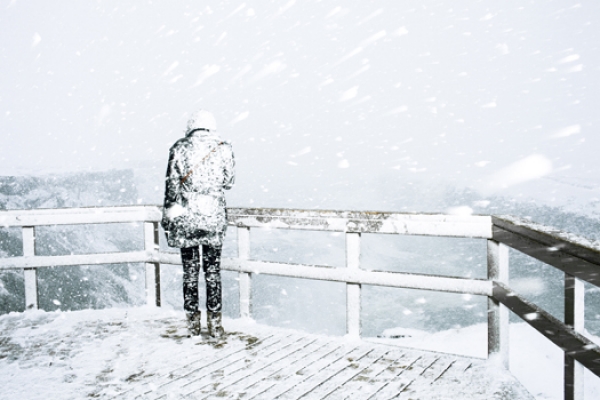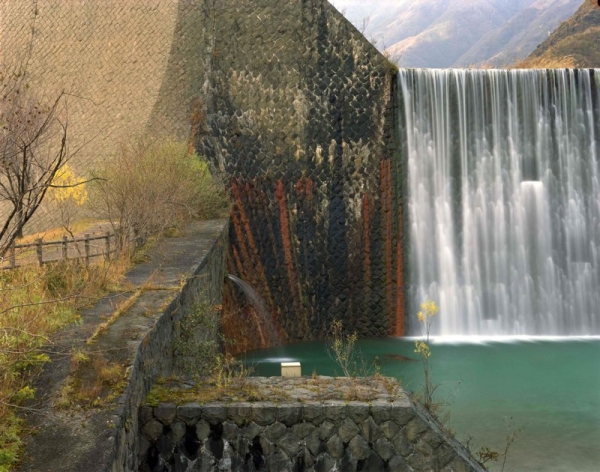

In its traditional form, a haiku comprises two images or ideas, with a “cutting word,” or kireji, between them, which provides structural support to the poem. The lyrical, minimalist photographs in Toshio Shibata’s exhibition, Water Colors, on view at Laurence Miller Gallery through April 25, are like visual haikus, in which images of nature and manmade structures are contrasted, and Shibata’s distinct approach provides the connective tissue.
Nature and the manmade never seem particularly at odds in these images, which were made mostly in northern Japan. Through Shibata’s lens, the dams, buoys, and sluices seem not like bastardizations of the landscape, but rather parts of a palette upon which nature can better present itself. In several images, for instance, the sweeping arcs of a line of orange buoys look like pearl necklaces in the waterscape. In Kofu City, Yamanashi Prefecture, the floats halt the wind on the water, causing the colors on either side to shift. This makes the surface, perhaps, more beautiful than it would have been untouched.
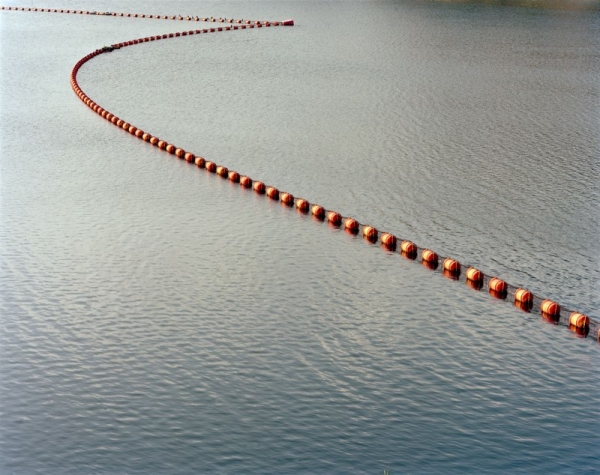

All the photographs in this exhibition have been selected, from amongst nearly a decade of work, for their cropping below the skyline. Without this grounding contextual element, the scenes are free to become exercises in abstraction. Hanno City, Saitama Prefecture, for one, is made of stacked strips of shadow, water and steel, a modernist architecture all its own.
All soft light and long exposures, the images here, as the exhibit’s title suggests, have the quality of watercolors, a product, most likely, of Shibata’s early education in painting. This effect is particularly pronounced in Shibata’s photographs of falling water, in which the steady streams are like white swatches of silk. Even as one imagines the roaring sound of the crashing falls from these imposing works of civil engineering, the quietness in Shibata’s vision reigns.

